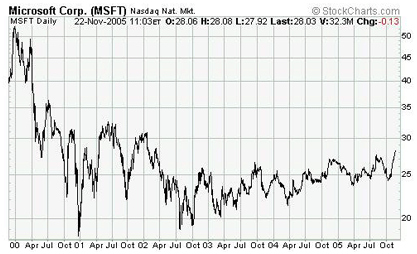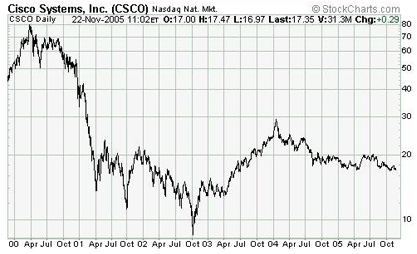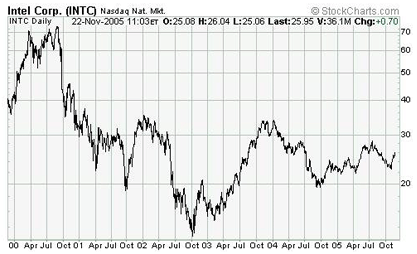| Home | About Us | Resources | Archive | Free Reports | Market Window |
How to Identify Earnings Shenanigans Before the News BreaksBy
Wednesday, November 23, 2005
“The only way to tell the genuine companies from the frauds was to find the ones that actually paid taxes.” - Victor Niederhoffer, Practical Speculation In 1999, with a market value of $104 billion, WorldCom represented 1.1% of the total S&P 500. Between 1996 and 2000, WorldCom generated $16 billion in profits. How was it then, that WorldCom only paid $298.5 million in taxes over the same period, for an effective tax rate of 1.9%? Enron stands as the United States' second largest bankruptcy in terms of lost value - about $66 billion. Between 1996 and 2000, Enron generated pre-tax profits of $1.8 billion, yet it RECEIVED $381 million back from the government in tax credits... for an effective tax rate of negative 39.5%! Then there’s Global Crossing... a $30 billion bankruptcy. And Adelphia... a $21.5 billion bankruptcy... These bankruptcies all share a common trait that differentiates them from other high profile insolvencies: They all reported splendid earnings right up until the point of implosion, and none of them paid their fair share of taxes. The earnings were fraudulent, of course, manipulated by greedy corporate executives. But the point is this: These bankruptcies took the market by surprise. Investors couldn’t possibly have known what was coming at them... Or could they? It turns out, by looking at tax liability, it would have been possible to identify earnings shenanigans at these companies before the news broke. The logic is simple - the more money a corporation generates each year, the greater its tax liability will be. Said another way, a high tax bill is the true mark of success. Conversely, few companies would go so far as to pay tax on money they never made in the first place. While their earnings might look high, if their tax bill doesn’t follow suit, you should wonder about the earnings’ quality. Here’s where it gets interesting: Not only does this indicator protect you from dodgy earnings, but it can also be used to increase your stock returns. Take two companies. They both earn $100 million before interest and tax. Company X pays $30 million in tax, while company Y only pays $10 million in tax. All else being equal, which company would you rather own? Company Y, correct? It’s paying out less money to the government, so cash flow is greater and the shareholder ultimately receives a bigger pile. Wrong. According to a study by Victor Niederhoffer, the stock price of companies that pay less tax tend to perform WORSE than companies that pay more tax, given the same level of earnings. In other words, a high tax rate is good for the stock price. It’s a counter-intuitive idea, as all the best stock market indicators always are. Comparing taxes paid with cash earnings, Niederhoffer split the 30 stocks of the Dow Jones Industrial Average into two equal groups... those that paid the most tax compared to earnings in 2001, and those that paid the least. He found that, nine months later, the high tax group returned, on average, Intrigued by his finding, he repeated the test on 50 randomly chosen S&P 500 stocks. The result was the same: The 25 high taxpayers returned Given this relationship, Steve and I wanted to know which companies today have the highest and lowest tax rates. We analyzed the earnings and tax liabilities of all the companies in the S&P 500 for 2004, and found the same names cropping up that Niederhoffer found four years ago: JP Morgan (NYSE:JPM), General Electric (NYSE:GE) and Citigroup (NYSE:C) continue to be among the lowest taxpayers. ExxonMobil, Home Depot and Wal-Mart continue to be among the highest taxpayers. In other words: Sell the former and buy the latter. History tells us the companies that pay their taxes are the companies that will pay you. Regards, Tom Dyson |
Recent Articles
|




